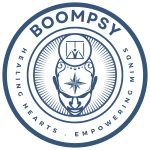Negotiating Using the Harvard Negotiation Project Method
Knowing how to negotiate effectively is a critical skill in business, politics, and everyday life. Whether you’re haggling over a car purchase, negotiating a salary raise, or mediating a conflict between colleagues, the ability to negotiate efficiently can make the difference between success and failure. However, for many people, the process of negotiation can feel intimidating, stressful, and challenging. That’s where the Harvard Negotiation Project Method comes in.
What is the Harvard Negotiation Project Method?
The Harvard Negotiation Project (HNP) Method is a system of negotiation developed by Harvard Law School faculty members Bruce Patton, Roger Fisher, and William Ury in the late 1970s. This method is based on a collaborative approach to negotiation that emphasizes mutual gain and problem-solving, rather than a win-lose mentality. The HNP Method emphasizes cooperation, communication, and creative problem-solving to achieve mutually beneficial agreements.
Key Principles of the Harvard Negotiation Project Method
Several fundamental principles form the foundation of the Harvard Negotiation Project Method. These principles include:
- Separate the people from the problem: Negotiation is often emotionally charged, and it’s easy to get caught up in personal feelings, biases, and assumptions. One of the critical principles of the HNP Method is to separate the people from the problem. This means that negotiators should focus on the issues at hand, rather than personal differences or emotions.
- Focus on interests, not positions: If you enter a negotiation with rigid positions, you may find it challenging to reach an agreement that meets everyone’s needs. The HNP Method emphasizes the importance of focusing on underlying interests, rather than fixed positions. This means that you should ask questions to understand the other party’s interests and needs and seek to create value by finding solutions that meet both parties’ needs simultaneously.
- Generate different options before deciding: The HNP Method encourages brainstorming multiple options before making a decision. This helps to ensure that all parties feel heard and that all potential solutions are fully explored before making a final decision. By doing so, the parties are more likely to find creative solutions that meet everyone’s needs and avoid the pitfalls of a “winner takes all” mentality.
- Insist on objective criteria: It is important to have objective criteria when negotiating. This can include market values, industry standards, legal precedents, and other benchmarks that provide an unbiased and measurable basis for decision-making. By relying on objective criteria, both parties can feel confident that the agreement is fair and equitable.
- Build a working relationship: Negotiation can be challenging, and it’s easy for parties to become entrenched in their positions. However, the HNP Method emphasizes the importance of building a working relationship based on trust and mutual respect. This can lead to smoother negotiations, more creative problem-solving, and more successful outcomes.
Applying the Harvard Negotiation Project Method
The HNP Method can be applied to virtually any negotiation, from simple one-on-one interactions to complex business deals and international diplomacy. However, applying the HNP Method effectively requires careful preparation, execution, and follow-through.
Preparation
Before entering any negotiation, it’s important to identify your interests, needs, and priorities, as well as the other party’s interests, needs, and priorities. This can involve researching the market, gathering information, consulting with colleagues or experts, and anticipating potential obstacles or objections.
Execution
During the negotiation itself, the HNP Method emphasizes the importance of clear and direct communication, active listening, and creative problem-solving. The HNP Method encourages negotiators to ask questions to uncover the other party’s interests, and to respectfully share their own interests to find common ground.
It is crucial to stay focused on the issues rather than on anything personal and remains committed to collaboration, understanding, fairness and creativity throughout the process. Each party should identify all possible options and then discuss each of them, exploring potential outcomes and what each would mean for the parties involved.
Follow-through
After the negotiation is complete, follow-through is essential to ensuring that the agreement is successfully implemented. This can involve monitoring performance, resolving any issues, and fostering ongoing communication and relationship-building with the other party.
Benefits of the Harvard Negotiation Project Method
The HNP Method offers several benefits compared to other negotiation approaches. These include:
- Increased likelihood of agreement: Since the HNP Method focuses on building trust and finding mutually beneficial solutions, it is more likely to result in an agreement that satisfies all parties involved.
- Improved relationships: The collaborative nature of the HNP Method emphasizes the importance of building a working relationship based on respect and trust. This can lead to more positive negotiations and stronger relationships between parties in the long run.
- Increased creativity and innovation: By encouraging brainstorming and exploring multiple options, the HNP Method can lead to more creative and innovative solutions than more rigid negotiation approaches.
- Decreased stress and tension: The HNP Method encourages a relaxed and non-threatening environment that is conducive for shared problem-solving. It enables both parties to communicate in a respectful manner, and avoid the potential for conflict.
Conclusion
Negotiating is an essential skill that plays a critical role in business, politics, and everyday life. While negotiating can feel intimidating and stressful, the Harvard Negotiation Project Method provides a collaborative, creative, and effective approach to negotiating. By focusing on interests, generating multiple options, and building a working relationship based on trust and mutual respect, negotiators can achieve mutually beneficial agreements that help all parties succeed.








